C.M. Saunders's Blog, page 3
February 6, 2025
The Cunning Linguist strikes again!
I am happy to reveal that my short story The Cunning Linguist has been included in Blood Lust, an erotic horror anthology on Black Hare Press.
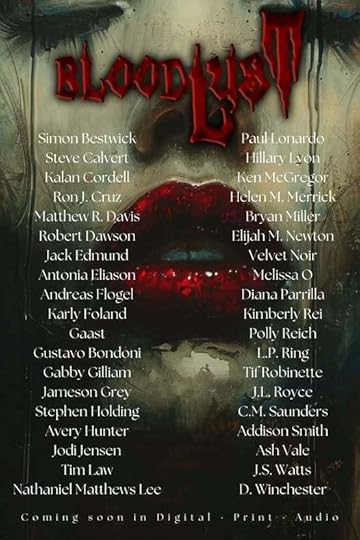
“From haunted longings to cursed encounters and kinky captors, this anthology promises an unforgettable journey into the depths of desire and fear, where every moment is charged with intensity and danger.”
The Cunning Linguist, about a player on the hardcore fetish scene who finally meets his match, was previously published in Welcome to the Splatterclub III.
You can pick up Blood Lust
January 19, 2025
2024 in Review
January 2024 saw the publication of my short story The Cunning Linguist in the long-delayed anthology Welcome to the Splatterclub, vol III on Blood Bound Books. You can probably guess what that one’s about. I have a long associated with BBB, and they’ve always been great to work with. That was followed by short fiction in Flash in a Flash, the Black Beacon Book of Ghosts edited by Cameron Trost, and Big Smoke Pulp, Vol I, which by my count became my 97th published short story (not including reprints). A second edition of Handmade Horror Stories, which includes my story Misshapes & Rejects, also came out.
On 27 March I released X6, my sixth volume of short fiction. It wouldn’t be too much of a stretch to say that X6 includes some of the darkest things I have ever written, including Holiday of a Lifetime, which I think has drawn the most reader complaints so far. My bad. Here’s the ToC. And here’s another look at the awesome cover by Greg Chapman.
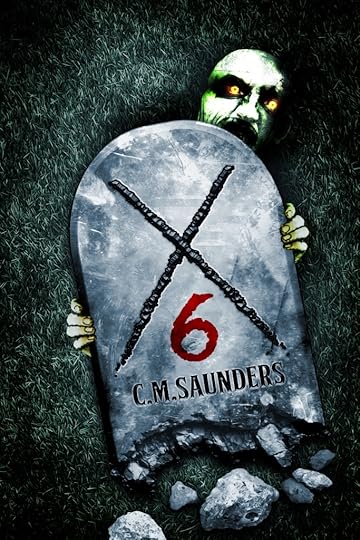
I have been so involved in fiction over the past couple of years, I drifted out of journalism, apart from the day job. I enjoy writing about writing, and I have a lot of experience to mine, so I pitched a few articles to an American magazine called Writer’s Digest. WD is a bit of an institution, and definitely one to cross off the bucket list. I hadn’t been that excited since I wrote for Loaded. By the end of the year WD had published features about making the switch from writing for consumer magazines to the trade press, horror fiction markets, healthy habits for cultivating success, and finding your writing niche. There are also a few more in the pipeline.
Another writing magazine I have built up a good relationship with is Authors Publish. A couple of years ago they ran a piece I wrote about how I got my first book published, then late last year they contacted me out of the blue and asked if they could reprint the piece in a long-form book. Would I like to be paid twice for the same thing with no extra work on my part? Go on, then.

With the revised version of the second Ben Shivers mystery, The Butcher (working title), safely off to the publisher, at the beginning of the year I started shopping Silent Mine around, a horror western novella about a disillusioned cowboy on the trail of a missing husband. The last anyone heard, the husband went seeking his fortune at a place called Silent Mine, and he didn’t come back. Silent Mine is the first of a series featuring a character called Dylan Decker who does his level best to put the ‘wild’ in the West. A new publisher called Undertaker Books soon picked it up and did an amazing job with every aspect of it, from the editing to the promotion and cover art. They also asked for a first option on any more Dylan Decker books, which was music to my ears because I had another one under my belt. Meeting at Blood Lake (provisional title) will be out some time in 2025.
To bridge the gap, and to round out the year, I wrote a Christmas-themed short story, A Christmas Cannibal, again featuring Dylan Decker, which you can grab for free from THIS LINK. If you are a fan of horror fiction, you might want to sign up for the Undertaker Books newsletter.

Meanwhile, here on my faithful blog, judging by the site stats the most popular posts of 2024 were my eyewitness account of Bruce Springsteen’s Cardiff gig and, bizarrely, my review of Ryan Adam’s Nebraska cover album. My RetView series, which examines classic horror movies through a contemporary lens, is also still going strong. Recent entries include the ‘most controversial film ever made’ Cannibal Holocaust, the sublime Incredible Shrinking Man, and the simply superb King of Zombies. However, by far the most popular was The Mutations, another surprise.
If you want a summary of 2023, you can find that here. I have lots already planned for 2025, so watch this space and stay happy.
Remember, the harder you work, the more you achieve.
January 3, 2025
The Bookshelf 2024
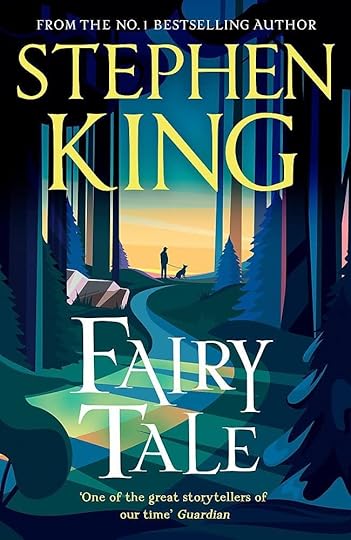
Stephen King’s Fairy Tale was sitting on my bedside table for months, mocking me. I began thinking it might be my version of Book of the Dead from the Evil Dead franchise. How the heck was I supposed to sleep next to that? And what was the alternative? Keep ignoring it? Hide it away forever? Then the book wins, man. It wins! Damn you, Sai King. Freaked me out before I even start reading the damn thing. It took me a long time to mentally prepare for Fairy Tale. After a couple of weeks I moved the bookmark past the dedication page. That’s progress, right? It just seemed like a huge challenge to take on. Or a journey to begin. Especially so soon after The Unbearable Lightness of Being almost ruined my soul. Fairy Tale took me four months to finish. My habit of reading more than one book at a time doesn’t help. The reason I am telling you that is because Fairy Tale is probably the best book I read all year. Sometimes taking that leap is worth it. King’s You Like it Darker is a close second.
Elsewhere, I am forever grateful to my book club for broadening my horizons. The Remains of the Day by Kazuo Ishiguro and Strange Weather in Tokyo by Hiromi Kawakami were both brilliantly written, but way outside the scope of what I would usually read. The Last Passenger by Will Dean also gets credit for a great premise.
Fairy Tale by Stephen King (2022)
Those people Next Door by Kia Abdullah (2023)
Welcome to the Splatterclub Vol III by Various Authors (2024)
The Villa by Ruth Kelly (2023)
The Rail Yard Apparitions by Samuel Brower (2015)
Them by Jon Ronson (2001)
The Last Passenger by Will Dean (2023)
Silence of the Lambs by Thomas Harris (1989)
You Like it Darker by Stephen King (2024)
Resurrection Mixtape by Jeff Bowles (2022)
The Remains of the Day by Kazuo Ishiguro (1989)
The Hike by Lucy Clarke (2023)
Squeeze Me by Carl Hiaasen (2020)
The Black Beacon Book of Ghosts by Various Authors (2024)
You’ll Be All Over the Papers by Keller Agre (2024)
Marigolds by DL Winchester (2024)
Strange Weather in Tokyo by Hiromi Kawakami (English translation 2012, original 2001)
The Other Emily by Dean Koontz (2021)
You can view last year’s bookshelf HERE.
December 15, 2024
A Christmas Cannibal
Christmas in the badlands is never much fun. But when someone steals his horse and leaves him for dead in a snowstorm, this one has the potential to be Dylan Decker’s worst ever. Or even his last.
But he isn’t ready to die just yet. He tracks the thief to a nearby town, where the festive season is in full swing, with revenge on his mind. Little does he know that his ordeal is only just beginning, and the ho ho horror is about to go to another level.
This time, Dylan may have bitten off more than he can chew.

A Christmas Cannibal, a stand-alone yuletide-themed horror western short story featuring Dylan Decker, hero of Silent Mine, is now available exclusively from Undertaker Books.
The best part is, it’s absolutely FREE!
Just visit this link to grab your copy.
This release also includes a discount code for Silent Mine, so there has never been a better time to take a ride with Dylan Decker as he puts the ‘wild’ in the West.
December 1, 2024
Cutter in Big Smoke Pulp, Vol 1
A while back I read something about Japanese artist Mao Sugiyama, whose greatest claim to fame was cutting off his own genetalia and serving it to guests at a dinner party. That would go down a storm on Come Dine With Me. His actions made him a pioneer of the nullo movement, made up of men who have their bits lopped off and ‘go smooth’ in an effort to become androgynous.
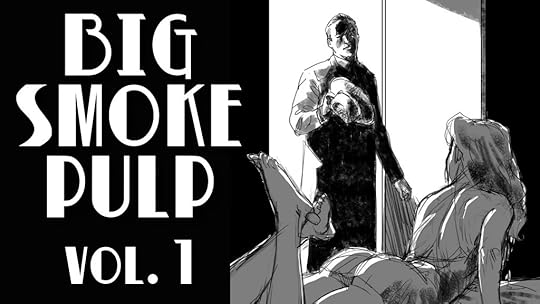
Add some salt, seasoning, and a dash of revenge, and that’s just too good not to write a story about. That story became Cutter, and it is included in the multi-genre collection Big Smoke Pulp, Vol. 1 from the team behind Pesto Comics. The project is described as “A short story anthology dedicated to chaos and mayhem told at a breakneck pace,” and Cutter definitely has plenty of chaos and mayhem. It’s also my 97th published short story (not including reprints). I think I’m in line for a cookie or something.
The Kickstarter for Big Smoke Pulp, Vol 1, is live now.
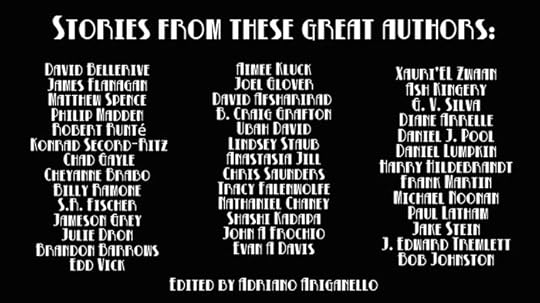
November 23, 2024
Mag Love
I know these days I’m in the minority, but I am absolutely obsessed with magazines. Always have been. Not websites, though I like some of those too, but proper old-school print mags. Back in the day I would spend literally hours looking at the shelves in WH Smith most weeks and bought them by the bag full. That was when there were hundreds to choose from. Now magazines have gone much more niche, and seem to be especially popular with hobbyists. The last time I perused the shelves I noticed a healthy amount of craft titles and more than one magazine about buses. It’s a totally different landscape. I currently subscribe to the print versions of Fortean Times, InPublishing and Classic Rock, and buy GQ or Uncut most months. I’m also partial to the odd travel mag, Wanderlust is a perennial favourite, and Four Four Two is always a good read, especially during the summer when you’re missing football a bit. If anything new comes onto the market, I’ll usually buy an issue or two to check it out, even if I’m not really into the subject matter.
I love everything about mags, but it took me a long time to see beyond the words and pictures and fully appreciate everything else that goes into them – cover lines, layouts, standfirsts, even the fonts they use. Then there’s all the stuff that goes on behind the scenes. The UK magazine industry is a pretty incestuous state if affairs, everyone knows each other. Pre-internet I used to study panels to see who moved where to do what. Writey McWritey pants used to be a sub-editor on this title, then he went to be a staff writer on that one, then he moved to deputy editor on this other one. It was possible to trace whole career trajectories just from reading magazine panels. Even though at that stage I had very little concept of what the individual roles actually entailed, I found the whole thing fascinating.
I think my love affair with mags started when I was a kid and my parents would buy me copies of Eagle to keep me quiet on long car journeys. I know Eagle was technically a comic, but let’s not split hairs. My favourite bits were always the photo features like Sgt Streetwise, Doomlord and The Collector. Looking back, many of those stories were quite sinister in tone, which probably sowed the seeds for what would come later. When I passed into my teenage years, I discovered the music press. Smash Hits was everything I wanted in a magazine; informative, funny, stylish. Don’t laugh, I’m serious. For a while there back in the mid-eighties, it absolutely bossed the music sector. I branched out sporadically into other titles like Q, Melody Maker, Sounds, Record Collector and NME, before my music tastes changed and I started buying Raw, Metal Hammer, and Kerrang! regularly. Pre-internet, the these titles were the only place you could find out about new releases, and usually only a few weeks after they came out. I’m not even joking.
One thing I disliked about the music press, and NME in particular, was the snidey tone it used. It seemed to get a kick from slagging people off, hardworking people who invested everything they had into their art, and its writers did their level best to make you feel stupid for liking anything mainstream while they wanked over obscure Billy Bragg b-sides. It was as if they saw themselves as the cool gang at school, and openly derided anything outside their little poppers-filled bubble. I remember the first issue of Kerrang! I bought, and thinking it was like stumbling across a whole new world. In a way, I had. In the late eighties/early nineties I was heavily into bands like Motley Crue, Guns n’ Roses, Skid Row and Cinderella. You just wouldn’t see them in NME. And if you did, they’d be lambasted. But along with those came all this other stuff like entire genres I’d never heard of. Even the language it used was different. I was sold, and I bought Kerrang! Every week for a decade or more. And then, Britpop. I still loved rock and metal, but Britpop and in particular its Cool Cymru sub-genre, was my new love; Oasis, Manic Street Preachers, Stereophonics, Sleeper, the Verve, Ride, Snow Patrol, Ocean Colour Scene. As much as I love rock and metal, I always felt as if I was on the outside looking in, even after I had a leather jacket and cowboy boots. But with Britpop/Cool Cymru, I was inside, living it every day. These bands were writing songs about me. Not me personally, obviously, but people just like me with crap jobs, insane girlfriends, bad habits, big dreams and not enough money.
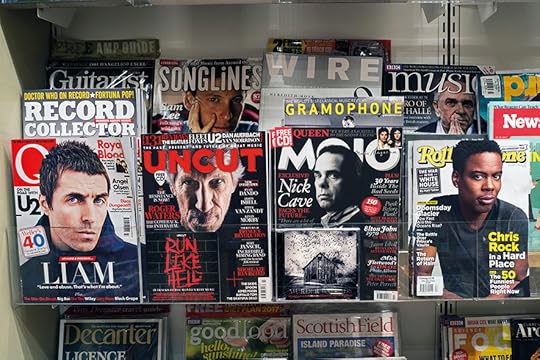 Music magazines on display in a newsagent
Music magazines on display in a newsagentIt wasn’t all about music. Spurred on by high-profile TV shows like the X Files and Buffy the Vampire Slayer, the nineties spawned a whole raft of paranormal magazines. Fortean Times was (and is) the daddy, having been launched before I was even born, but it was soon joined by the likes of Enigma and Bizarre. FT was one of the first mainstream mags to ever publish any of my stuff, and I’ve been on the subscriber list ever since. One of the best things about coming home after spending an academic year in China was the stack of FTs I knew would be waiting for me. A lot of people I meet are quite dismissive of it and assume it’s a magazine about aliens and conspiracy theories, and it is, to a point. But they don’t understand how cynical and sarcastic it is. That’s probably why my natural writing style is such a good fit.
In the midst of all this, a new magazine launched called Loaded. This was a new concept, a magazine about stuff men wanted to read about; sport, films, music, hot women, gadgets and grooming mixed in with more cerebral features about iconic moments in history, popular culture, and travel. Mostly, it was about having fun. I remember reading one of the first issues in awe and thinking, “These guys are living their best lives. They go everywhere, do everything, and get paid for it?” That was a turning point in my life and, bored of my crap job and insane girlfriend, I decided I wanted to do that. Sign me up. Within a couple of years Loaded had spawned a whole new genre, lad mags, as they were called, and was soon joined on the newsagent racks by Front, Ice, Maxim, Nuts, Zoo, and others, while older mags like FHM, GQ, Esquire and Arena relaunched and tried to reposition themselves to be more in line with this lucrative new market. Competition often brings the best out of people, and consequently this was the golden age of magazines.
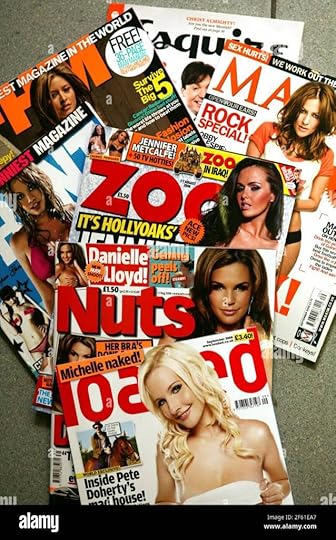
Until the Cool Cymru movement put us on the map, Wales didn’t have a lot going for it apart from a huge workforce with nothing to do. One thing you often hear Welsh people talk about is the isolation. We are just so far away from everything, not only geographically but metaphorically (the Springsteen line “There’s something happening somewhere, baby I just know there is” springs to mind) By the turn of the 21st Century I was having stuff published regularly on a freelance basis but I knew that if I was ever going to make it I was going to have to move away. So I did. To Southampton, where I did a degree in journalism. My dissertation was called ‘The Cultural Impact of Loaded Magazine. In my summer holidays I did work experience slots at as many mags as I could (including Front, Ice, and Maxim), which was my initiation to London, the journalism industry, and everything that went with it. It’s not an exaggeration to say I learned more during one of those two-week placements than I did on a three-year degree course. When I graduated I moved to China, only to come back seven years later when I somehow blagged my dream job at Nuts. I also fulfilled my long held ambition of writing for Loaded, though this happened when the mag was in decline and everyone who had made it what it was had left. Also, they neglected to pay me and I had to start a small claims action to get my money. How very Loaded.
Yep, there are far less magazines around now, and as a format print probably won’t be around much longer. It’s just so costly, what with materials, distribution, and all the extra staff you need just to keep things ticking over, not to mention envoronmental concerns. The lad mags lost the war with feminism and disappeared, and even the music dector has been decimated much like the rest of the music industry. The Internet is both the best and the worst thing to happen to us. But all this this just makes me appreciate the mags that are left more, and you should too.
November 8, 2024
The Widow of Wood Forge
Over the years I have set quite a few short stories in or around the village of Wood Forge, including What Happened to Huw Silverthorne, What Happened Next, Never Go Back, and Demon Tree, which were all published in various places. Some are inter-connected, most aren’t. They just share the same setting. A bit like Stephen King uses Castle Rock. The village is fictional, but it’s based on the place I grew up; New Tredegar in the South Wales valleys. It’s quiet and tranquil there. Mostly. Some city dwellers might even call it idyllic. But like most other places, it has a dark underbelly.
Here ’tis:

Lovely, innit?
The Widow of Wood Forge is about a boy living in the village who develops an unhealthy obsession with an old woman who recently died. Don’t worry, there’s no necrophilia involved. But he does break into her now-empty house one night, only to find it isn’t empty after all. There’s probably a lesson to be learnt there. The story was originally called Mrs Craven’s House, but I changed the title on the advice of an editor who presumably felt the new one fit the mood a bit better. If that’s the case, I have to say he was right. The alliteration is a bonus.
The Widow of Wood Forge is included in the new anthology The Black Beacon Book of Ghosts, edited by Cameron Trost, out now.
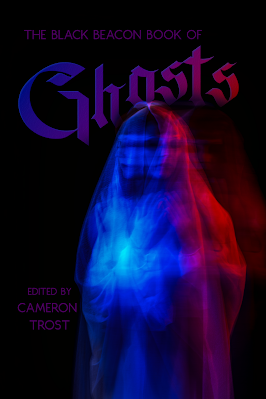
October 31, 2024
RetView #82 – Cannibal Holocaust (1980)
Title: Cannibal Holocaust
Year of Release: 1980
Director: Ruggero Deodato
Length: 96 mins
Starring: Robert Kerman, Carl Gabriel Yorke, Francesca Ciardi
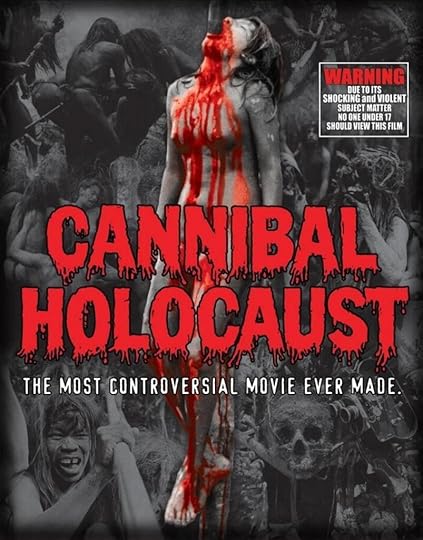
A lot of films have been called controversial. Scroll this blog series and you’ll find dozens of them. But not many films can legitimately claim to be ‘the most controversial film of all time.’ Oh boy. This has everything; genocide, mutilation, graphic violence, animal slaughter, sexual assault, nudity, racial discrimination, not to mention portrayals of actual cannibalism. The film was banned, on various grounds, in over 40 countries (including the UK until 2001) and Italian director Ruggero Deodato, who heavily influenced both Eli Roth and Quentin Tarantino, was even investigated on suspicion of murder at one point. More about that later. In fact, the film is still banned in some countries, even in its edited form. Not that it mattered much when home video became popular, and even less now with the Internet. There has been so much intrigue around this release that it would require a whole book to explain in full rather than a measly blog post. What a lot of people seem to forget is that Deodato was (he died in 2022 aged 83) a purveyor of exploitation cinema. It was the mechanism he used to shine a light on ‘difficult’ topics. Added to that, he was a master manipulator. If he got a rise out of anyone watching this film, for whatever reason, that was exactly what he wanted, and something he went to great lengths to achieve. Even the use of the word ‘holocaust’ in the title was no accident, and you feel was intended to simply stir up emotions, especially in Europe where the word still held so many negative connotations through World War Two and Italy’s association with fascism.
The movie follows a team of American film-makers led by anthropologist Harold Monroe (Kerman) into the Amazon rainforest (it was filmed on location) as they search for indigenous tribes rumoured to be cannibals. No prizes for guessing what probably happened to them, then. Footage from the trip is recovered (found footage, if you will) and later ends up in the hands of a TV station where execs watch it and together we discover the grisly fate of the expedition. Many have suggested that this marked the beginning of the found footage genre later popularised by movies like The Blair Witch Project (1999), Megan is Missing (2011), and V/H/S (2013). Produced as part of the contemporary cannibal trend of Italian exploitation cinema, Cannibal Holocaust was partly inspired by Italian media coverage of Red Brigades terrorism. Deodato thought that the media focused on portraying violence for salacious reasons with little regard for journalistic integrity, and believed that journalists staged certain news angles in order to obtain more sensational footage. This idea of media manipulation became central to the film, which essentially a mockumentary about a group of filmmakers who stage scenes of extreme brutality for a Mondo-style documentary. For example, ‘recovered’ footage shows the group capturing and raping a local Ya̧nomamö (Tree People) girl. In one of the film’s most iconic scenes they later find the girl impaled on a wooden pole by a riverbank. It is assumed that the natives killed her for loss of virginity, but subtley implied that the filmmakers themselves killed her and staged it as a murder for dramatic effect. The result is that the viewer begins to question everything they see, and ask whether they themselves are being manipulated, which of course, they (we) are. In a 2011 article for The Guardian, journalist Steve Rose remarked, “As a comment on shock value, Cannibal Holocaust succeeded all too well. The get-out is that the film-makers in Cannibal Holocaust are the real savages. They are shown goading, raping and even killing to get sensational footage for the media back home.”
After its premiere in Italy, the film was ordered to be seized by a local magistrate, and Deodato was arrested on obscenity charges. He was later charged with multiple counts of murder due to rumours that several actors were killed on camera in snuff film fashion and faced life in prison. In reality, the cast had signed contracts requiring them to disappear for a year after shooting to maintain the illusion that they had indeed died. When the actors appeared in court, alive and well, the murder charges were dropped, but not before it blew up in every newspaper in the country.
It was alleged that during production, many cast and crew members, including Kerman, protested the use of real animal killing in the film, which is certainly hard to watch at times. I still feel for that poor turtle. The point Deodato seems to be making here is that animals are living, breathing creatures, and they bleed and writhe when they are killed, something society often forgets when all the meat we consume comes in shrink-wrapped packages from the supermarket. This is typical of Deodato’s approach in that his preferred method of inferring a message was to hold it up in front of your face and take a machete to it. He was similarly derided for his ‘exploitation’ of native tribes, actual members of which play key roles in the film but are uncredited and, allegedly, unpaid, though one would assume that with concept of money being so alien to them they wouldn’t know what to do with it anyway. At its core, the film is an attack on sensationalist media, which is often built on flawed journalistic ethics, all of which Deodato used himself to great effect in marketing the film. Love it or hate it, you have to admire the ingenuity. In a 2011 interview with the BBC prior to his death, the director said: “All debates on cinema are good for the artform. The most important aspect [of Cannibal Holocaust] was the original use of reportage style. The special effects aimed to make people believe what they were seeing was real.”
Cannibal Holocaust has never really been out of the public eye, but was thrust back into the limelight in 2013 when it was revealed to be the inspiration for Eli Roth’s Green Inferno which took its title from the opening monologue in Cannibal Holocaust. A planned sequel, entitled Cannibal Fury, was never made. Even knowing what we know today, it remains as shocking as ever. This isn’t a pleasant viewing experience, but it was never intended to be.
Trivia Corner:
Demonstrating once more how media savvy and self aware he was, in 2007 Deodato made a cameo appearance in Eli Roth’s Hostel: Part 2 playing a cannibal, no doubt with his tongue firmly implanted in his cheek.
October 12, 2024
UNFACEBOOKED!!
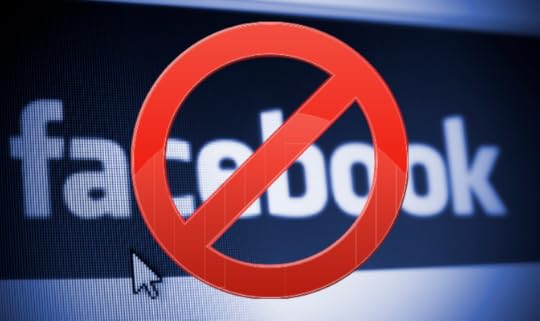
One afternoon a few weeks ago I received an email asking if I’d changed my Facebook password.
Nope, I hadn’t. With a growing sense of dread, I opened Facebook and logged in. Or tried to. My efforts were thwarted with the ominous message:
ACCOUNT DISABLED.
What did that even mean? It sounded a lot worse than merely having my account limited or suspended. A quick Google search informed me that; ‘Facebook may disable your account if you’ve used it in a way that violates their terms and standards. This includes using a fake name, impersonating someone, sending spam messages, and harassing other users.’
I couldn’t remember doing any of those things. Who has time for that? If I could impersonate anyone, I’d impersonate myself so I could be in two places at once. It was all I could do to keep up with the cat videos.
After some more online sleuthing I was able to piece together what most likely happened. Someone used my email address to try to log into my Facebook, knowing they would be unsuccessful and would need a code sent to my email to reset the password. This means they must have somehow gained access to my Hotmail account. That was the most invasive part of all. It wasn’t just the idea that some stranger, or strangers, or bot, or some evil AI creation, had been rifling through my private correspondence (which isn’t that exciting, to be honest). I was more concerned about all the transactions I’ve made via email. There are receipts, invoices, warranty agreements, and bank details galore. Everything someone so inclined would need to rob me blind. When the hacker was in possession of the magic code, they used it to reset my Facebook password and locked me out. Whatever happened next Facebook didn’t approve of and disabled my account. I hope it wasn’t anything too terrible. I haven’t heard from the police yet, so that’s a plus.
It didn’t really matter how or why this happened. But now it had, I had to deal with it. Switching to damage limitation mode, I logged out of Hotmail and reset the password. Then I hurriedly checked my online banking app. Thankfully, there was no unusual acvtivity. I could still log into Twitter, Whatsapp, LinkedIn, WordPress, and eBay, so the attack hadn’t penetrated that far. Never-the-less I kept a close eye on things for the next few days. It appeared I’d gotten off relatively lightly, but being denied access to Facebook was a blow. My profile had thousands of contacts, some of whom I’d been chatting to for years and only knew on FB. There were exes and crushes, old friends and former colleagues, not to mention hundreds of photos. Almost every step of my last fifteen years has been meticulously chronicled. Facebook wasn’t just my address book, but my diary, too. The attack had also left messenger and business page out of commission.
The interwebs said that when Facebook disables an accounts in this manner, it sends the registered user an email outlining the appeal process. I didn’t receive an email, so had no recourse. I tried to contact customer support, but anyone who has ever tried to do this will know it is virtually impossible. You just get caught in a loop. I did find an email address that other people with the same problem has contacted. I wrote to it, and waited. There was no reply.
At first, not having Facebook was just inconvenient. Even a bit of a novelty. But a few days in I found myself habitually picking up my phone several times a day, or several times an hour, and attempting to log in because I really needed to know what that woman I worked with eight years ago had for lunch, or what John from Bath thought of the latest Doctor Who episode.
ACCOUNT DISABLED.
Then I would forget, and and a couple of hours later whip out my phone and try to message one of my pool mates to see we had a match.
ACCOUNT DISABLED.
Did I have Steve’s phone number saved? It’s surprising how little I have used my phone to actually call people in recent years, and scrolling through my list of contacts feels clunky and odd. There are three Steves in my phone. Steve, Steve 2, and Steve S. Which, if any, is the right Steve? Should I call one of them? What do I say? If I know them I’d have to have some kind of conversation. A procession of Steves run through my mind. Every Steve I’ve ever known. I look at my text history to see if I can gather any clues. That’s another world I haven’t delved into for a while. I can’t even remember the last SMS I sent.
What am I doing? I’ll just message Steve on Facebook messenger like I always do.
ACCOUNT DISABLED.
Oh yeah.
Forgot about that.
Even after doing it fifty times, I would still feel a jolt of confusion, then an achingly familiar sense of disappointment as my mind again retraced the sequence of events that had led me to that point. I sent another email to the email address I’d written to before. A longer and more detailed one, which I saved on my computer so I could send it again. And I did. I send it every couple of days. Now, I’m into double figures. They still haven’t replied.
There can be no denying the first few evenings were difficult. I felt like that teenager who couldn’t go to the disco. Any upheaval upsets your life balance, then you get used to it. Us humans are a resilient lot. It dawned on me how much time I was saving. My phone very kindly informs me every week of how much time I spend scrolling, and apparently I’d used it over seven hours less than the week before. Was all that Facebook time? It must be. That was the only thing that had changed. Seven hours a week was the equivalent of a part time job. For an hour a day I was soaking up ads and arguing with people I didn’t know about things I didn’t care about. If I was lucky. Interaction has dropped off a cliff on Facebook in the past few years. Most of the time you are just scrolling. Or, more accurately, consuming content. Now, I just consume content elsewhere. It isn’t difficult. I use news sites more, and those dedicated to things I spent over an hour a day looking for on Facebook.
And I am all over my email. The moment something lands in my inbox and I get that notification I spring into action. It must be the a replacement for the endorphine hit you supposedly get when you get a Facebook ‘like.’ It remains to be seen whether this is a good thing or a bad thing, but at least there’s no build-up in my inbox. That was where all the most important stuff always went, any way.
I’m not alone in this. My sleuthing tells me security breaches and subsequent shut-outs such as the one I experienced are a growing problem. It’s so common it probably deserves it’s own name, so I’m going to go out on a limb here and give it one. Unfacebooked.
I’ve been unfacebooked.
It can only be a matter of time before the term enters the common vernacular. Our increasing reliance on technology means things like this are only probably going toto be expected. Modern life is rubbish, and all that. But it does make me wonder how alert to the issue Meta are. I should be grateful to them for acting so quickly and disabling my account before any real harm could be done, but making themselves virtually uncontactable is counterproductive and frustrating in the extreme. You would think a company that raked in more than $134bn in in 2023 would have better customer service.
And still my emails went unanswered. It seems the only way to resolve the issue is to pay £9.99 to be verified on instagram, which is also owned by Meta. This gives you access to an actual human via its help centre. I explained the situation, was given a case number, and assured they were looking ointo it. So is this a cash grab or just massively inconvenient?
Whatever the case, I’ve heard nothing in over a week. I’ve already decided to cancel the next payment to Meta, whatever happens. The mere thought of starting a new Facebook account is daunting. In fact, I might not even bother. Who is to say I somehow manage to rebuild my contacts and connections only for this to happen again? Maybe I will feel differently when the dust settles. But right now, I’m just enjoying the extra seven hours a week. To make sure the same thing doesn’t happen to you, though, don’t rely on Facebook.
September 21, 2024
The Wretched Bones – Happy Goat Horror Review
The Wretched Bones – by C.M. Saunders
All the thanks for this amazing review by the good people over at HGH!



